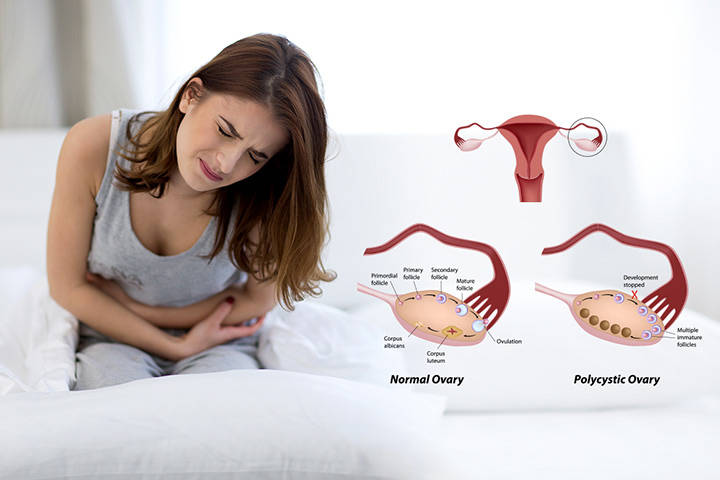
The Ultimate Guide on PolyCystic Ovarian Syndrome (PCOS): Part 1
25 Dec 2015 | 3 min Read
Dr Ritu Hinduja
Author | 4 Articles
PCOS (or PCOD, as referred to by many) is the most common disorders among women today and it could start even at puberty! So it is important to understand what it is about.
Dr. Ritu Hinduja, a seasoned infertility specialist and an expert on the panel of BabyChakra explains all you need to know about this disorder.
It is a condition marked by an imbalance of female sex hormones which then causes an array of symptoms affecting the menstrual cycle, fertility, the skin, hair and even put women at risks of conditions such as diabetes. The ovaries are the chief organs responsible for this condition, though not exclusively. It is often diagnosed in the 20s or 30s but symptoms often begin when the first periods come at menarche. About 5% to 10% of women are estimated to be suffering from this condition.
What are the symptoms of PCOS?
1. Irregular periods or no periods at all
2. Difficulty becoming pregnant (reduced fertility)
3. Having more facial or body hair than is usual for you (hirsutism)
4. Loss of hair on your head
5. Being overweight, rapid increase in weight, difficulty losing weight
6. Oily skin, acne
7. Depression and mood swings.
The symptoms may vary from woman to woman. Some women have mild symptoms, while others are affected more severely by a wider range of symptoms.
What is PCOS?
A standard definition states that a woman who has 2 of the 3 criteria below is said to have PCOS:
1. Oligo-ovulation and/or anovulation – That means ovulation either totally absent or present in some cycles only.
2. Excess androgen activity – The ovaries produce excess male sex hormones producing male characteristic like deepening of the voice and male hair distribution.
3. Polycystic ovaries -This is a characteristic feature that gives the condition its name. Multiple small cysts like tiny balloons containing fluid are seen in the ovaries.
Understanding ovaries and ovulation
The ovaries are a pair of glands that lie on either side of the womb (uterus). Each ovary is about the size of a large marble. The ovaries make eggs (ova) and various hormones. Hormones are chemicals that are made in one part of the body, pass into the bloodstream, and have an effect on other parts of the body.
Ovulation normally occurs once a month when you release an egg (ovum) into a Fallopian tube which leads into the uterus. Before an ovum is released at ovulation, it develops within a little swelling of the ovary called a follicle (like a tiny cyst). Each month several follicles start to develop, but normally just one fully develops and goes on to ovulate.
To have a complete understanding of PCOS, please read the complete series by Dr Ritu Hinduja.
The Ultimate Guide on PCOS – Part 2
The Ultimate Guide on PCOS – Part 3
Read on for suggestions of a nutritionist: Battling PCOS & Pregnancy Weight
To consult Dr Ritu Hinduja in person, click here.
A


Suggestions offered by doctors on BabyChakra are of advisory nature i.e., for educational and informational purposes only. Content posted on, created for, or compiled by BabyChakra is not intended or designed to replace your doctor's independent judgment about any symptom, condition, or the appropriateness or risks of a procedure or treatment for a given person.
